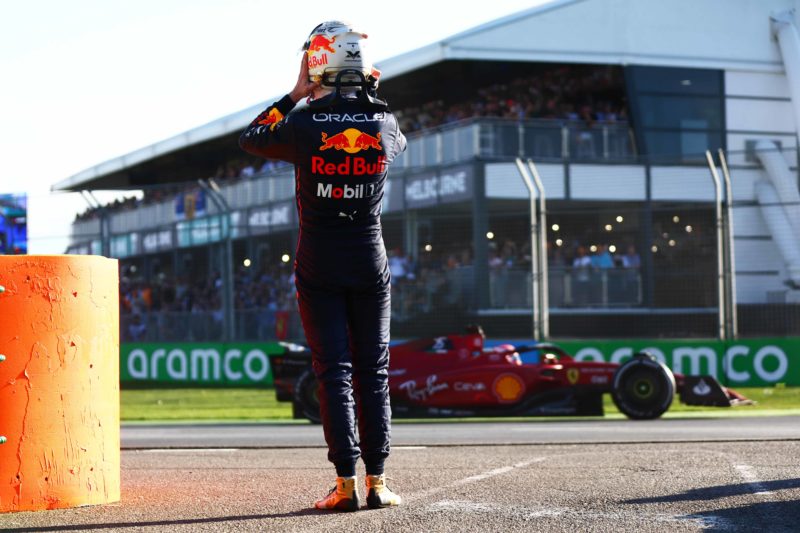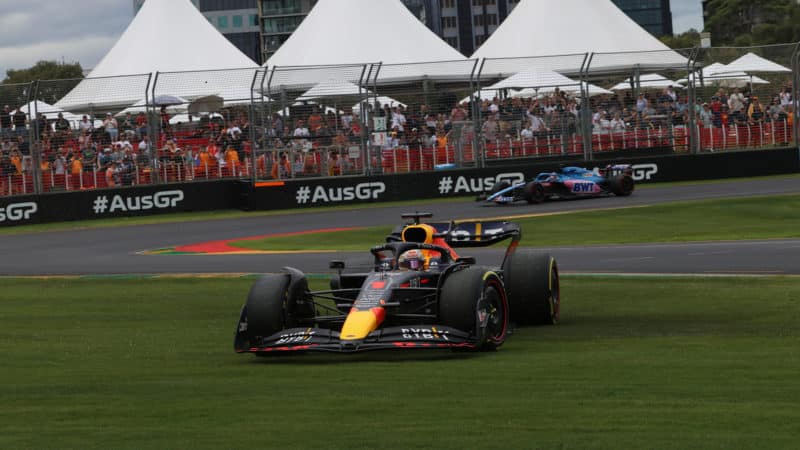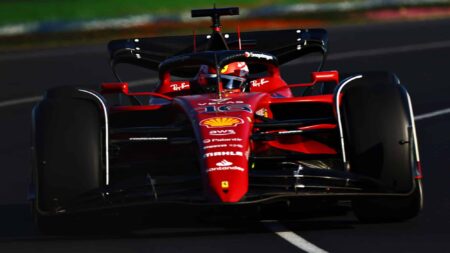Red Bull had still been thinking it needed to protect the rears as it went into qualifying and so stayed with the compromised set-up. It quickly became apparent on race day that the circuit evolution had moved the load balance to the front – meaning Red Bull, in hindsight, had reacted in exactly the wrong direction. The medium tyre on which everyone apart from the gamblers started, was the tyre prone to graining. The soft wouldn’t be seen on race day. The hard was less problematic than the medium and would comfortably get you to the end after an opening stint on the medium. But it was slow to get up to temperature.
So Leclerc took off in the lead, Verstappen chased. The Ferrari was beautifully balanced. Controlling front graining – not rear – had always been the preoccupation at Ferrari right from the beginning. “It was an issue we considered,” said Mattia Binotto, “and knew it could be on the medium tyres a concern so we worked on it since the Friday, on the set-up and balance. We managed to make it work. Luckily we didn’t suffer from it in the race.”
Which meant that Leclerc was not stressing his front tyres anything like as much as Verstappen to do the same lap time. Verstappen watched in frustration as Leclerc edged away at two- to three-tenths each lap. At some point, trying to limit the damage, he pushed on – and destroyed the front-left. The Red Bull just could not sustain a Ferrari-like pace and any attempt to do so resulted in this. By lap 11 he was 1sec off the pace, too early to have a good gap to drop into after a pit stop. So he had to endure the pain for a further seven laps before coming in and getting onto a set of hards. He was over 8sec behind the serene Leclerc as he peeled off into the pitlane, a big enough gap for Ferrari to leave Leclerc out for another four laps. Even four laps on old tyres when Verstappen was on new only reduced Leclerc’s margin by 1sec, such was the slow-to-warm trait of the hards and the perfect tyre-kind balance of the Ferrari.
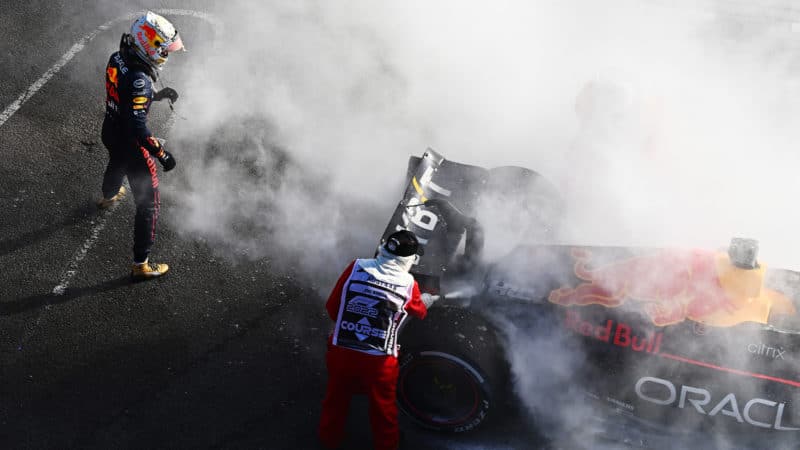
Second place was the best Verstappen could hope for before retirement
Clive Mason/Getty Images
The Red Bull didn’t have the graining problem on the hard, but it still had its sector 3 understeery balance – and so Leclerc was able to just cruise at a comfortable pace and still pull out time on Verstappen. Max got a sniff of an opportunity when a Sebastian Vettel crash brought out the safety car, wiping out the previous deficit, bringing his tyre temperatures down – but too far down (he blamed the slow speed of the safety car). He was unable to take full advantage on the restart of Leclerc getting dirt on his tyres and understeering through the final corner. Leclerc fended him off down to Turn 1 – and pulled away all over again.
That was how Leclerc was always going to win – even before the Red Bull’s fuel leak lost the system pressure and brought Verstappen to a halt with 19 laps to go.
False dawn for Mercedes & McLaren
Verstappen’s retirement promoted Sergio Perez up to second in the other Red Bull. He’d lost out at the start to Lewis Hamilton’s Mercedes, repassed it after 10 laps and later had to find a way past the other Mercedes of George Russell – who had leapfrogged both Hamilton and Perez through being able to make his pit stop under the safety car and thereby save around 10sec to the pack. So Perez and Russell filled out the podium.
It gave the illusion of Mercedes having made progress. It had not and wasn’t kidding itself that it had. It was absolutely as far off the pace as at the first two races. It was merely able to dice with the slower of the two set-up-compromised Red Bulls and even then lost out. Perez had overworked his front tyres in racing Hamilton and so was even slower in the remainder of that stint than he might have been. Later, there was a stage where Hamilton was lapping as fast as Leclerc. But that was Leclerc in cruise mode. When he later stepped it up, he was 1sec faster than the Mercedes.
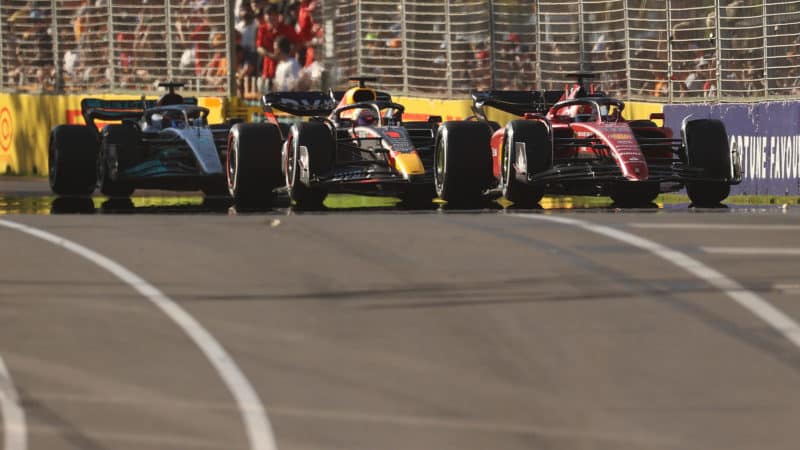
Red Bull’s struggles made Mercedes look better than it is
Robert Cianflone/Getty Images
It was a similar story at McLaren for which Lando Norris and Daniel Ricciardo took fifth and sixth, behind Hamilton. Norris’s fourth on the grid was flattered by the problems of Carlos Sainz – but he did legitimately out-qualify both Mercs. The circuit suits the car, but that’s still 1sec off the pace, as before. In the race the Mercs were ahead right from the start, the McLarens kept them within sight for a few laps but gradually fell away, their front tyre graining more severe because of the set-up choice which had enabled Norris to out-qualify Hamilton and Russell.
Alonso & Alpine
In reality the Alpine in Fernando Alonso’s hands was a faster car in Melbourne than the McLaren. It was similarly quick on the long drag of sector 2 and not as bad in sector 3, courtesy of the McLaren’s relatively poor braking performance. Had he qualified in the third/fourth place he’d looked set for before a hydraulics issue put him in the barrier in Q3, he’d likely have been engaging the Mercs and maybe Perez in battle. We were denied that spectacle and, starting 10th, he opted for the hards, which was a strategy ruined by the timing of the Vettel safety car.
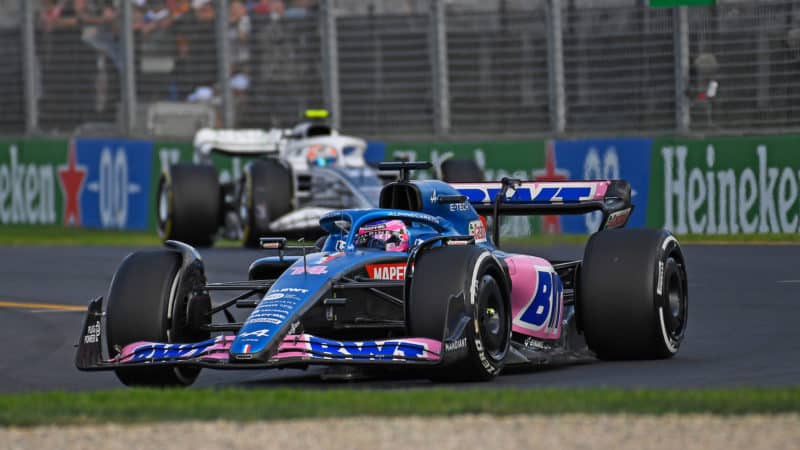
Alonso could have been fighting for the podium if it hadn’t been for qualifying crash
Grand Prix Photo
Alonso’s crash came just as Carlos Sainz’s Ferrari was about to cross the line for a lap that might have been a provisional pole and which would certainly have had him starting towards the front rather than in ninth. This led him too to make the gamble of starting on the hard tyre with its slow warm-up. An issue with the steering wheel also contributed to an awful start. Unlike in Bahrain and Jeddah, he’d looked as quick as Leclerc through the practices – and for it to go so badly wrong at just this very crucial time clearly frustrated him. Impatient to make progress on his cold tyres, he spun into the gravel on lap 2. He may just have put himself into the support role for the season, given Leclerc’s points tally already and the prospect of a title campaign.
